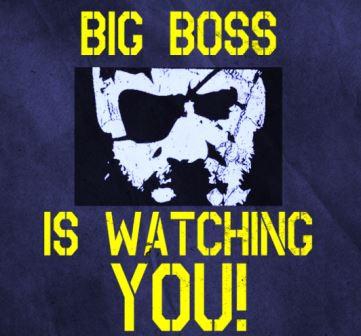Putting employees under surveillance to measure efficiency, and ensure data security is a common practice. However, constant surveillance also increases fear and stress levels in employees and decreases trust levels.
United Parcel Service (UPS) uses an employee monitoring service called Telematics to keep a tab on its drivers. The system uses a wireless device and the ‘black box’ technology to transmit data back to the organisation, in real time. The data transmitted covers vehicle use, maintenance requirements and automotive servicing.
This means that UPS drivers are constantly under surveillance and the company could track when the driver opened the bulkhead door, when he backed up, when his foot was on the brake, when he was idling, when he buckled his safety belt and even when he took bathroom breaks.
The company might have done this in the disguise of maintaining a level of security and safety, but often this is used to monitor the employees’ productivity and measure their stealing time.
Such monitoring is not just a part of UPS alone. Today, it’s common at workplaces to put employees under surveillance. For instance, computer surveillance is widely used to supervise activity— to monitor the sites employees are trying to access, the e-mails being sent, and even to record personal data.

“It is like panopticon surveillance,” says, a senior HR professional. The concept was designed for prisons in the 18th century, where one observer would keep watch over all prisoners from a central tower.
“Employers do not realise that such practices increase paranoia in the work-place, knowingly or unknowingly,” the HR professional adds.
Employers often justify that workplace monitoring is essential to protect the organisation from unwanted actions conducted over the employer’s network.
“While monitoring and surveillance is an important part of ensuring that the workplace is productive, there is a fine line between the right amount of monitoring and surveillance, and too much of it,” says S Varadarajan, CHRO and head, corporate affairs, TATA-SIA Airlines.
“No monitoring makes the workplace unaccountable and susceptible to risk. However, it’s also true that overdoing it hampers creative productivity causing frustration and burnout. Monitoring should be used as a tool, to support the performance appraisal process, which includes timely support of by the manager to the subordinates,” he tells HR Katha.
A few industry observers opine that monitoring and surveillance is very crucial for any sector in today’s times. Given that every employee has access to/is privy to sensitive data and information, there could be a breach in data protection causing grievous harm.
Usually, there are restrictions in IT-ITES companies, especially if the coding or data handled for clients is confidential in nature. Some companies do get a monitoring and surveillance clause put in their contracts to ensure confidentiality. Some even put terms of productive hours, given the tight deadlines. It’s because both headcount and time is money in such projects.

In case of UPS, tracking worker productivity goes straight to the bottom line. Time is money, and the management knows exactly how much.
All said and done, many industry practitioners are just against such practices.
“In my view, monitoring and surveillance increases fear and stress levels in employees, and decreases trust levels with respect to the organisation, in general. Research also supports this view. This had relevance decades ago when organisations were more the ‘command and control type’, following the hierarchical system and only the stick approach,” says Aparna Sharma, a senior HR professional and author of HR Reality Bytes.
“In today’s times, while employers use monitoring devices to keep track of their employees’ actions and productivity, their employees feel that too much monitoring is an invasion of their privacy. Also, there are ethical implications of constant monitoring,” she adds.
Having said that, she quickly adds that companies many also have specific policies around Cyberloafing, which is again a growing menace.
“If the employees are inducted into the monitoring and surveillance process in the right manner, it will inculcate in them a spirit of belonging and discipline that they believe will benefit their growth in the long run,” opines Varadarajan.
It’s a fact that the millennials are more prone to surveillance even in their personal lives. However, the work profile of employees needs to be kept in mind while sensitising them to these processes.
If an employee has to be concerned about having every motion monitored, she is less likely to be thinking out of the box or coming up with creative solutions. The ultimate result may be less productivity.
Google, for instance, actually allows employees to spend 20 per cent of their work time on blue sky thinking, innovations and play.
In today’s virtual organisations, completion of project deliverables while ensuring quality is the key. ‘How’ and ‘where’ is left to the individuals or teams within the organisational framework,” says Sharma.
Perhaps, balancing employee privacy and business needs is the answer to developing an effective and defensible monitoring programme.




1 Comment
This may be effective tool for professional organizations. But still for middle / smaller organizations tight surveillance is always required. “Carrot & stick motivation policy” still widely used by mgmt. Free environment shall always be encouraged in the mean time proper controlls should also be imposed.